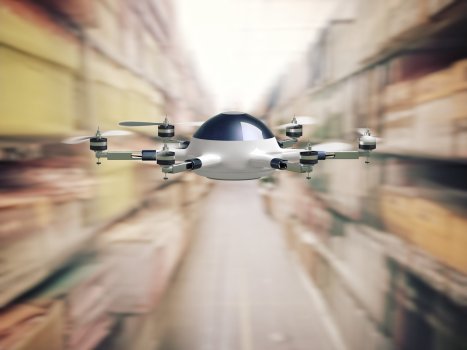K
Kathleen Martin
Guest
Unmanned aerial vehicles (UAVs) — known commonly as drones — were originally a tool solely for the military.
Now they’re used regularly for civilian purposes such as photography, monitoring traffic and fighting fires, said Janarthan Sivarajah, senior new business manager, professional liability, with Toronto-based Zensurance.
As with most flying objects, drones are prone to accidents. According to the Canadian Civil Aviation Daily Occurrence Reporting System, 779 drone incidents were reported between 2014 and 2018. Furthermore, 30% of those incidents were reported within one nautical mile of an airport.
As a result, insurance is a must, whether your clients are flying drones for work or for play.
First, there’s insuring for the physical damage of the UAV itself. “Say it crashes into a building and it’s damaged, lost or stolen,” Sivarajah said. “We can insure the actual drone.”
More important is third-party liability. “That protects you from any bodily injury or property damage from the use of the drone,” he said. For example, injuries can occur from a drone landing (or crashing) into a person’s vehicle — or the person. “If your drone runs out of power and crashes into an individual, [the insurance] will cover the injury, as well as any medical expenses associated with that injury.”
Similar to other insurance types, drone coverage can come with extensions such as invasion of privacy. “If you’re a photographer and flying drones, there’s a chance of invasion of privacy if you take a photo of someone you don’t have a right to.”
There’s also a cyber extension. A photographer using a UAV will have digital assets, Sivarajah said. “If the drone gets stolen, lost or damaged, are they able to recoup the costs for those assets?”
And consider noise liability. “[Say] your drone causes too much noise and your neighbour complains and there’s a lawsuit against that,” he said.
In other words, the nature of the UAV use will determine the right amount of coverage and the type, Sivarajah said.
Continue reading: https://www.canadianunderwriter.ca/insurance/eyes-in-the-sky-coverage-for-drone-usage-1004212694/
Now they’re used regularly for civilian purposes such as photography, monitoring traffic and fighting fires, said Janarthan Sivarajah, senior new business manager, professional liability, with Toronto-based Zensurance.
As with most flying objects, drones are prone to accidents. According to the Canadian Civil Aviation Daily Occurrence Reporting System, 779 drone incidents were reported between 2014 and 2018. Furthermore, 30% of those incidents were reported within one nautical mile of an airport.
As a result, insurance is a must, whether your clients are flying drones for work or for play.
First, there’s insuring for the physical damage of the UAV itself. “Say it crashes into a building and it’s damaged, lost or stolen,” Sivarajah said. “We can insure the actual drone.”
More important is third-party liability. “That protects you from any bodily injury or property damage from the use of the drone,” he said. For example, injuries can occur from a drone landing (or crashing) into a person’s vehicle — or the person. “If your drone runs out of power and crashes into an individual, [the insurance] will cover the injury, as well as any medical expenses associated with that injury.”
Similar to other insurance types, drone coverage can come with extensions such as invasion of privacy. “If you’re a photographer and flying drones, there’s a chance of invasion of privacy if you take a photo of someone you don’t have a right to.”
There’s also a cyber extension. A photographer using a UAV will have digital assets, Sivarajah said. “If the drone gets stolen, lost or damaged, are they able to recoup the costs for those assets?”
And consider noise liability. “[Say] your drone causes too much noise and your neighbour complains and there’s a lawsuit against that,” he said.
In other words, the nature of the UAV use will determine the right amount of coverage and the type, Sivarajah said.
Continue reading: https://www.canadianunderwriter.ca/insurance/eyes-in-the-sky-coverage-for-drone-usage-1004212694/

